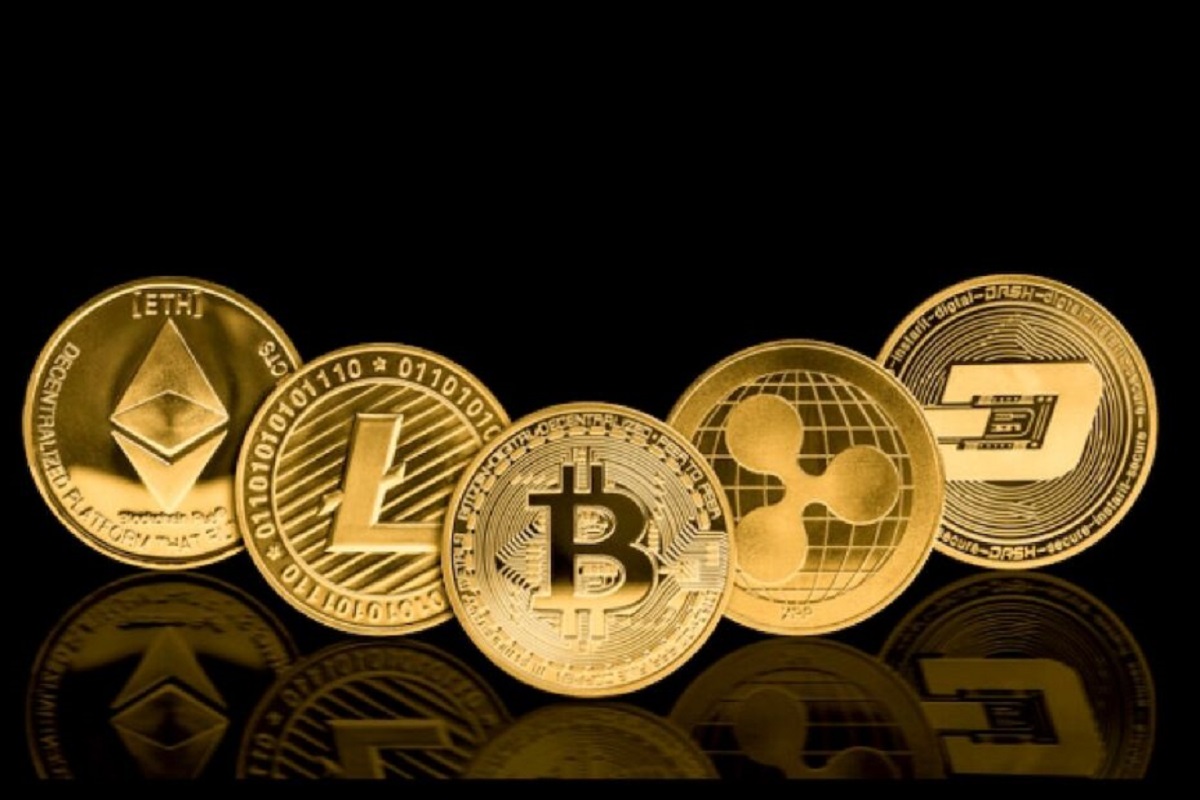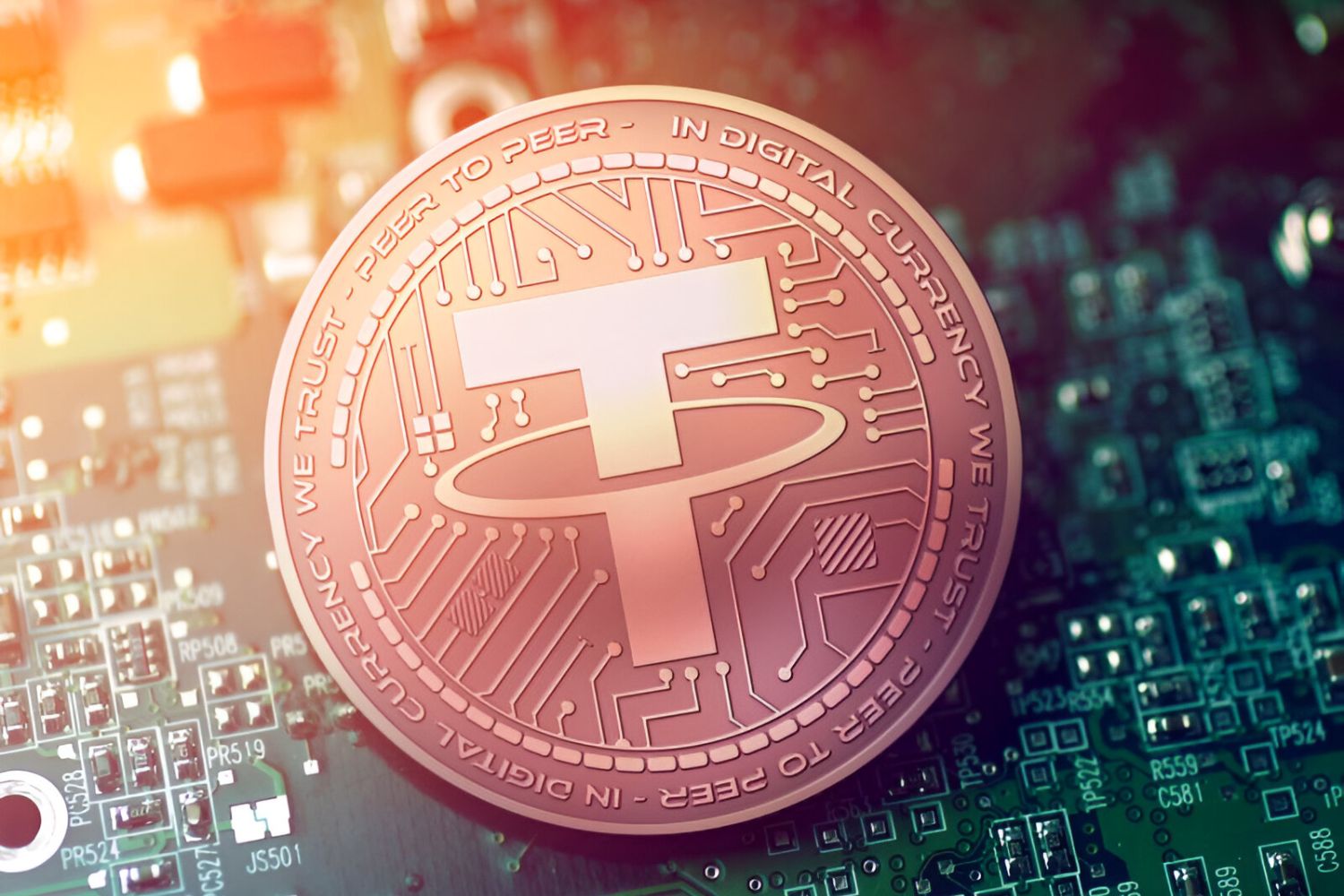Introduction
Digital currency has gained significant attention in recent years as an alternative form of payment and investment. As the world becomes increasingly digitized, the need for secure and decentralized methods of transferring value has become more apparent. Digital currency, also known as cryptocurrency, offers a solution to this need by utilizing cryptographic technology to ensure secure transactions and maintain the integrity of the currency.
With the rise of digital payment platforms and the increasing acceptance of cryptocurrencies by merchants worldwide, the market for digital currency has experienced remarkable growth. This article explores the concept of digital currency, the types of digital currency available, how it works, the benefits it offers, and the factors influencing its market. Furthermore, it examines the challenges faced by the digital currency market and provides insights into its future prospects.
As the world becomes more globalized and interconnected, digital currencies provide individuals and businesses with a borderless means of conducting financial transactions. Unlike traditional fiat currencies issued by central banks, digital currencies are not controlled by any centralized authority. Instead, they operate on decentralized networks, such as blockchain technology, which ensures transparency, security, and immutability.
The popularity of digital currencies can be attributed to their potential to revolutionize various industries, including finance, technology, and commerce. By leveraging blockchain technology, digital currencies eliminate the need for intermediaries, such as banks, and facilitate peer-to-peer transactions. This not only reduces transaction costs but also enables greater financial inclusivity, particularly for those who are unbanked or underbanked.
Moreover, digital currencies offer increased privacy and security compared to traditional financial systems. Transactions conducted with digital currencies are pseudonymous, meaning the parties involved are identified by their digital wallet addresses rather than their personal information. Additionally, the use of cryptographic algorithms ensures the integrity and immutability of transactions, making them highly secure and resistant to fraud.
The market for digital currency has rapidly expanded over the years, with a growing number of individuals and institutions recognizing its potential. Major digital currencies like Bitcoin, Ethereum, and Ripple have gained widespread adoption and are traded on various cryptocurrency exchanges. Furthermore, an increasing number of merchants, both online and offline, are accepting digital currencies as a valid form of payment, further fueling their adoption.
This article will delve deeper into the types of digital currencies available, how they operate, the benefits they provide, and the factors that influence their market. It will also explore the challenges faced by the digital currency market and provide valuable insights into its future trajectory.
What is Digital Currency?
Digital currency, also known as cryptocurrency, is a form of digital or virtual currency that utilizes cryptographic technology to secure and verify transactions. Unlike traditional fiat currency issued by central banks, digital currency exists solely in electronic format and operates independently of any central authority.
At its core, digital currency is a decentralized form of money that enables peer-to-peer transactions without the need for intermediaries such as banks. It is based on cryptographic algorithms and distributed ledger technology, commonly known as blockchain, which ensures the security, transparency, and immutability of transactions.
One of the defining features of digital currency is its encryption techniques, which make it highly secure and resistant to fraud. Each transaction is encrypted and validated by a network of computers, known as miners, who solve complex mathematical puzzles to verify the authenticity of the transaction. Once verified, the transaction is added to a block in the blockchain and becomes a permanent record.
There are numerous types of digital currencies available, with Bitcoin being the most well-known and widely accepted. Bitcoin was the first decentralized cryptocurrency and remains the largest by market capitalization. Other popular digital currencies include Ethereum, Ripple, Litecoin, and Bitcoin Cash.
While digital currencies share many similarities with traditional fiat currencies, they also have some distinct characteristics. One key difference is that digital currencies are not physical, meaning they do not have a physical form like coins or banknotes. Instead, they exist solely as digital entries in a ledger.
Furthermore, digital currencies are not issued or regulated by any central authority, such as a government or central bank. Instead, their value is determined by market demand and supply dynamics. This decentralized nature gives digital currencies a degree of independence from political and economic factors that can impact traditional currencies.
Another important aspect of digital currency is its global accessibility. Unlike traditional banking systems that may have limitations on cross-border transactions, digital currencies enable seamless and near-instantaneous transfers of value across borders. This makes them particularly valuable for individuals and businesses conducting international transactions.
Overall, digital currency is a revolutionary concept that has the potential to redefine how we conduct financial transactions. Its decentralized nature, cryptographic security, and global accessibility make it an appealing alternative to traditional banking systems. As we move further into a digital era, digital currencies are expected to play an increasingly significant role in our financial systems.
Types of Digital Currency
The world of digital currency encompasses various types, each with its unique features and functionalities. Here are some of the most prominent types of digital currency:
- Bitcoin (BTC): Bitcoin, introduced in 2009, is the first and most well-known digital currency. It operates on a decentralized peer-to-peer network, relying on blockchain technology to secure and validate transactions. Bitcoin holds the largest market capitalization and has become widely accepted as a form of payment and store of value.
- Ethereum (ETH): Ethereum, launched in 2015, is more than just a digital currency. It is a decentralized platform that enables the creation and execution of smart contracts and decentralized applications (DApps). Ethereum’s native cryptocurrency, Ether, is used to fuel transactions and computational operations within the Ethereum network.
- Ripple (XRP): Ripple, developed in 2012, is both a digital currency and a global payment protocol. Unlike Bitcoin and Ethereum, Ripple aims to facilitate seamless and low-cost cross-border transactions. It offers faster transaction times and lower fees, making it an attractive option for banks and financial institutions.
- Litecoin (LTC): Created in 2011 by Charlie Lee, a former Google engineer, Litecoin is often referred to as the “silver” to Bitcoin’s “gold.” It is built on similar principles as Bitcoin but offers faster block generation times and a different hashing algorithm. Litecoin aims to be a more efficient and accessible digital currency for everyday transactions.
- Bitcoin Cash (BCH): Bitcoin Cash emerged in 2017 as a result of a hard fork from Bitcoin. It was created to address scalability issues and provide faster and cheaper transactions. Bitcoin Cash maintains much of the core features of Bitcoin but with increased block size, allowing for more transactions to be processed per block.
These are just a few examples of the wide range of digital currencies available in the market. Each digital currency offers different features and serves specific purposes within the digital economy. As the digital currency landscape continues to evolve, new types of digital currencies, such as stablecoins and privacy-focused coins, are also gaining popularity.
Stablecoins, like Tether (USDT) and Dai (DAI), are designed to maintain a stable value by pegging their price to a stable asset, such as a fiat currency or a commodity. They provide stability and are often used for trading or as a means of preserving value in volatile market conditions.
Privacy-focused coins, such as Monero (XMR) and Zcash (ZEC), prioritize user privacy and anonymity. They employ advanced encryption techniques to obfuscate transaction details, ensuring that the sender, recipient, and transaction amounts remain private.
It is essential to note that the digital currency market is dynamic, and new types of digital currencies continue to emerge. Investors and users should conduct thorough research and exercise caution when engaging with different types of digital currencies to understand their specific features, potential risks, and use cases.
How Does Digital Currency Work?
Digital currency operates on a decentralized and cryptographic system that allows secure and transparent transactions without the need for intermediaries. Understanding how digital currency works requires an understanding of key concepts such as blockchain technology and cryptographic algorithms.
At the heart of digital currency is blockchain technology. A blockchain is a distributed ledger that records all transactions in a transparent and immutable manner. Instead of a central authority keeping track of transactions, the blockchain relies on a network of computers, known as nodes, to maintain and validate the ledger.
When a digital currency transaction occurs, it is verified by multiple nodes in the network. This process involves solving complex mathematical puzzles, a process known as mining. Once verified, the transaction is grouped with other transactions and added to a block. Each block contains a unique identifier, a timestamp, and a reference to the previous block, forming a chain of blocks, hence the name “blockchain”.
The use of cryptographic algorithms ensures the security and integrity of digital currency transactions. Each transaction is encrypted using cryptography, making it highly secure and resistant to fraud. Cryptography also enables users to control their digital currency holdings through the use of private keys, which are essentially secret codes that allow users to access and authorize transactions with their digital currency.
Moreover, digital currency transactions are pseudonymous, meaning that while a transaction is recorded on the blockchain, the parties involved are identified by their digital wallet addresses rather than their personal information. This provides a level of privacy in transactions conducted with digital currencies.
In order to participate in the digital currency ecosystem, users need a digital wallet. A digital wallet is a software application or hardware device that allows users to securely store, send, and receive digital currency. Wallets are often protected by cryptography and require private keys to access the digital currency holdings.
When a user wants to send digital currency to another user, they initiate a transaction from their wallet. The transaction is then broadcasted to the network, where it is propagated among the nodes for verification. Once verified, the transaction is added to a block and becomes a permanent record on the blockchain. The recipient’s wallet reflects the updated balance, confirming the successful transfer of digital currency.
It is important to note that the value of digital currency is determined by market demand and supply dynamics. Digital currency exchanges facilitate the buying and selling of digital currencies, often allowing users to trade different digital currencies against one another or against traditional fiat currencies.
Overall, digital currency works through the use of blockchain technology, cryptographic algorithms, and decentralized networks. The combination of transparency, security, and peer-to-peer functionality has made digital currencies an increasingly popular alternative to traditional financial systems.
Benefits of Digital Currency
Digital currency offers various benefits that have contributed to its growing popularity and adoption worldwide. From increased financial inclusivity to enhanced security and efficiency, here are some key benefits of digital currency:
- Financial Inclusivity: Digital currency has the potential to provide financial services to the unbanked and underbanked populations. With a digital wallet and internet access, individuals can send, receive, and store digital currency, enabling them to participate in the global economy without relying on traditional banking systems.
- Fast and Global Transactions: Digital currency enables near-instantaneous transactions that can be conducted across borders without the need for intermediaries. This eliminates barriers such as currency conversions and international transaction fees, making it easier for individuals and businesses to engage in cross-border trade and transactions.
- Reduced Transaction Costs: Traditional financial systems often involve fees imposed by intermediaries, such as banks and payment processors. Digital currency transactions can significantly reduce or eliminate these fees, making it more cost-effective, especially for microtransactions or remittances.
- Enhanced Security: Digital currency transactions are highly secure due to the cryptographic algorithms employed. Each transaction is encrypted and verified by multiple nodes in the network, making it challenging for malicious actors to tamper with or alter transaction records. Additionally, digital wallets provide users with control over their funds and the ability to secure them with private keys.
- Greater Privacy: While digital currency transactions are recorded on the blockchain, the parties involved are identified by their digital wallet addresses rather than personal information. This pseudonymity provides a level of privacy, especially compared to traditional financial systems where personal information may be shared with multiple parties.
- Decentralization and Resilience: Digital currencies operate on decentralized networks, making them less susceptible to control or manipulation by centralized authorities. This decentralization also contributes to the resilience of digital currencies, as they are not reliant on a single point of failure.
- Investment Opportunities: The rise of digital currencies has presented new investment opportunities for individuals and institutions. The market for digital currencies has grown significantly, allowing investors to trade and invest in various digital assets and potentially benefit from asset appreciation over time.
It is important to note that while there are significant benefits to digital currency, there are also risks and challenges to consider. Digital currencies can be volatile, and the lack of regulation in some cases may expose users to potential scams or fraud. It is essential for individuals to conduct thorough research, exercise caution, and adopt best practices when engaging with digital currencies.
Overall, digital currencies offer numerous advantages in terms of accessibility, efficiency, security, and investment opportunities. As the technology continues to evolve and gain wider acceptance, digital currencies are likely to play a crucial role in shaping the future of finance and commerce.
The Market for Digital Currency
The market for digital currency has experienced rapid growth and global adoption in recent years, driven by factors such as increasing acceptance, technological advancements, and evolving financial ecosystems. As digital currencies gain mainstream recognition, their market size and value continue to expand.
One of the key indicators of the digital currency market is market capitalization. Market capitalization refers to the total value of all digital currencies combined. Bitcoin, being the largest and most prominent digital currency, often dominates a significant portion of the market capitalization. However, other digital currencies, such as Ethereum, Ripple, and Litecoin, have also gained substantial market value.
The market for digital currency is highly dynamic and volatile, with prices fluctuating based on factors such as market demand, supply, investor sentiment, regulatory actions, and technological developments. Digital currency markets operate 24/7, enabling users to trade and invest at any time, further contributing to their liquidity and market activity.
Digital currency trading occurs on specialized digital currency exchanges, where users can buy, sell, and trade various digital currencies. These exchanges act as intermediaries, matching buyers and sellers and facilitating transactions. Additionally, over-the-counter (OTC) platforms and peer-to-peer (P2P) exchanges provide alternative avenues for trading digital currencies.
The market for digital currency is not limited to individual investors. Institutional investors, such as hedge funds, asset management firms, and banks, are increasingly showing interest and involvement in the digital currency market. This institutional participation brings additional liquidity and stability to the market and indicates broader acceptance and recognition of digital currencies as a legitimate asset class.
The adoption of digital currencies as a form of payment is also gaining traction. Major companies and online retailers now accept digital currencies as a means of payment, expanding the use cases and utility of digital currencies beyond mere investment vehicles. Additionally, partnerships between digital currency payment processors and traditional financial institutions enable seamless integration between digital currencies and existing payment infrastructure.
Government regulations and policies play a significant role in shaping the digital currency market. Governments across the globe are grappling with the regulatory frameworks for digital currencies, seeking to balance innovation with consumer protection and financial stability. The degree of regulatory clarity varies from country to country, with some embracing digital currencies while others remain cautious or even hostile.
It is important to note that the digital currency market is still evolving and maturing. Factors such as technological advancements, regulatory developments, market trends, and investor sentiment can impact the growth and direction of the market. Staying informed and monitoring these factors is crucial for participants in the digital currency market to make informed decisions.
Despite the market’s potential, it is not without risks. Price volatility, hacking incidents, scams, and regulatory uncertainties are challenges that both investors and market participants need to account for. However, as the market matures and industries continue to adopt digital currencies, the market for digital currency is poised to expand further and shape the future of finance.
Factors Influencing the Market of Digital Currency
The market of digital currency is influenced by a variety of factors that can significantly impact its growth, value, and adoption. These factors range from global economic conditions to technological advancements and regulatory developments. Understanding these factors is crucial for investors, traders, and market participants to make informed decisions. Here are some key factors that influence the market of digital currency:
- Market Demand and Trends: Market demand is a significant driver of the digital currency market. Investor sentiment, public perception, and trends within the cryptocurrency community can all influence the demand and adoption of digital currencies. Positive trends, such as increased institutional interest or regulatory clarity, can lead to market growth, while negative sentiment or market downturns can cause temporary price declines.
- Technological Advancements: Technological advancements in the digital currency space, such as scalability solutions, interoperability protocols, or upgraded security measures, can have a significant impact on the market. Innovations that improve the efficiency, functionality, or security of digital currencies can attract new investors and users, driving market growth and adoption.
- Regulatory Environment: Government regulations and policies play a vital role in shaping the digital currency market. Regulatory clarity, favorable frameworks, and supportive policies can encourage investor confidence and mainstream adoption. Conversely, stringent regulations, bans, or uncertain regulatory landscapes can create barriers to entry and impact market sentiment.
- Global Economic Conditions: Economic factors, such as inflation, interest rates, geopolitical events, and financial crises, can influence the digital currency market. In times of economic instability, investors may turn to digital currencies as a potential hedge against traditional financial systems or store of value, contributing to increased market activity and price volatility.
- Industry and Institutional Adoption: Partnerships and collaborations between digital currency projects, technological companies, financial institutions, and industry players can have a positive impact on the market. Integration of digital currencies into existing financial systems, merchant acceptance, and institutional involvement can drive mainstream adoption and enhance the market’s legitimacy.
- Technological and Security Concerns: As the market of digital currency continues to evolve, technology-related concerns such as scalability, transaction speeds, interoperability, and security vulnerabilities can influence market sentiment. Major security breaches, hacks, or regulatory crackdowns on fraudulent or insecure projects can erode trust and impact the overall market.
- Media and Public Perception: Media coverage and public perception of digital currencies can have a significant impact on market sentiment. Positive media coverage, endorsements, or influential figures entering the digital currency space can create optimistic market conditions, while negative news, regulatory warnings, or high-profile scams can dampen investor enthusiasm and negatively affect market sentiment.
It is important to note that the digital currency market is highly volatile and can be influenced by a combination of these factors. Each digital currency may also have its specific factors that can impact its market performance. Staying informed, conducting thorough research, and monitoring market trends, news, and regulatory developments are crucial to managing risks and making informed decisions in the digital currency market.
As the market continues to mature and gain wider acceptance, the influence of these factors may evolve and change. It is essential for market participants to stay adaptable and be aware of the complex dynamics that shape the digital currency market.
Challenges in the Digital Currency Market
The digital currency market presents unique challenges that both investors and participants must navigate. While the potential for growth and innovation is substantial, several challenges need to be addressed for the sustained development of the market. Here are some key challenges in the digital currency market:
- Regulatory Uncertainty: The lack of clear and consistent regulatory frameworks for digital currencies remains a significant challenge. Different countries have varying approaches and levels of acceptance, resulting in regulatory fragmentation. Uncertainty and inconsistency in regulations can create barriers to entry, hinder innovation, and dampen investor confidence.
- Volatility and Price Fluctuations: Digital currency prices are known for their high volatility, with significant price fluctuations occurring within short periods of time. Rapid price movements can be attributed to factors such as market sentiment, liquidity, and speculative trading. The inherent volatility can pose challenges for investors and limit the mainstream adoption of digital currencies.
- Scalability and Transaction Speed: Scalability remains an ongoing challenge in the digital currency market. As the number of users and transactions increases, blockchain networks can experience congestion and slowdowns. Transaction speeds become a concern, affecting the efficiency and usability of digital currencies for day-to-day transactions.
- Security Risks and Hacking: Security vulnerabilities present risks in the digital currency market. Cyberattacks, hacking incidents, and theft of digital assets remain persistent challenges. While blockchain technology provides inherent security, vulnerabilities can exist in digital wallets, exchanges, or user error. Robust security measures and user education are essential to mitigate these risks.
- User and Investor Protection: The lack of comprehensive consumer protection and investor safeguards is another challenge. Scams, fraud, and misleading projects can deceive inexperienced investors and tarnish the industry’s reputation. Regulations addressing these issues, along with improved transparency and accountability, are crucial to safeguarding users and maintaining market integrity.
- Interoperability and Standardization: The digital currency market consists of a multitude of different projects, each with its own protocols, standards, and functionalities. This lack of interoperability and standardization can hinder collaboration and limit the seamless exchange of value between different digital currencies and blockchain networks.
- Public Perception and Trust: Public perception plays a vital role in the digital currency market. Negative stereotypes, associated with financial crime, illicit activities, or market volatility, can hamper wider adoption and acceptance. Building trust and improving education around digital currencies are essential to overcoming these challenges.
Addressing these challenges requires collaboration among stakeholders, including governments, regulatory bodies, industry participants, and technology developers. The establishment of clear regulations, improved security measures, enhanced infrastructure, and increased education and awareness can help overcome these obstacles and pave the way for the broader adoption and stability of digital currencies.
Additionally, ongoing research and development efforts are needed to address scalability concerns, improve transaction speeds, and enhance the overall user experience. Building robust and secure digital currency ecosystems will be crucial to overcoming current challenges and enabling the market to mature further.
The Future of Digital Currency
The future of digital currency holds immense potential as the technology continues to advance and gain wider acceptance. While the market is still in its early stages, several trends and developments point to a promising future for digital currencies. Here are some key aspects to consider when looking at the future of digital currency:
- Mainstream Adoption: As digital currencies become more widely accepted and integrated into traditional financial systems, we can expect increased mainstream adoption. The growing acceptance of digital currencies by merchants, payment processors, and even governments indicates a shift towards embracing the benefits of this emerging technology.
- Financial Inclusion: Digital currencies have the potential to provide financial services to the unbanked and underbanked populations worldwide. With a simple smartphone and internet access, individuals can access digital currency wallets and participate in the global economy, thereby reducing financial exclusion and promoting economic empowerment.
- Central Bank Digital Currencies (CBDCs): Many central banks are exploring the concept of central bank digital currencies (CBDCs). These are digital representations of fiat currencies issued by central banks. CBDCs have the potential to enhance the efficiency, security, and transparency of traditional monetary systems while leveraging the benefits of digital currencies.
- Interoperability and Cross-Chain Solutions: The development of interoperability protocols and cross-chain solutions will enable seamless value transfer and communication between different blockchain networks and digital currencies. This interoperability will facilitate greater efficiency and connectivity within the digital currency ecosystem, encouraging wider adoption and usability.
- Enhanced Scalability and Transaction Speeds: Technological advancements, such as layer-two scaling solutions like the Lightning Network and Ethereum’s proposed upgrades, are addressing scalability and transaction speed concerns. These developments aim to improve the efficiency and usability of digital currencies for everyday transactions, expanding their potential use cases.
- Regulatory Clarity and Frameworks: As the digital currency market matures, regulatory frameworks will likely become more defined and consistent. Clear regulations will provide a stable and secure environment for organizations and users to operate within, encouraging further institutional involvement and fostering investor confidence.
- Integration with Emerging Technologies: Digital currencies have the potential to integrate with other emerging technologies, such as artificial intelligence (AI), the Internet of Things (IoT), and decentralized finance (DeFi). These synergistic connections can lead to new applications and opportunities, expanding the utility and impact of digital currencies.
- Sustainability and Energy Efficiency: With the growing concern for environmental sustainability, the digital currency industry is actively exploring ways to improve energy efficiency and reduce its carbon footprint. The adoption of greener mining practices and the use of renewable energy sources for blockchain networks are areas of focus for achieving a more sustainable future.
The future of digital currency is dynamic and constantly evolving. It is essential to remain adaptable and receptive to market trends, technological advancements, and regulatory developments. While challenges persist, such as scalability, regulatory uncertainty, and security risks, continued innovation and collaboration will drive the digital currency market forward.
As individuals, businesses, and industries recognize the potential of digital currencies to reshape financial systems, empower individuals, and unlock new possibilities, the future of digital currency looks promising.
Conclusion
The world of digital currency is rapidly evolving, offering an alternative form of payment and investment that challenges traditional financial systems. Digital currency, operating on decentralized networks and utilizing cryptographic technology, provides secure and efficient transactions without relying on intermediaries.
Throughout this article, we have explored the concept of digital currency, the types available, how it works, its benefits, the market dynamics, influencing factors, challenges, and future prospects. Digital currency has proven to be a disruptive force, revolutionizing the way we conduct financial transactions, promote financial inclusion, and shape the future of finance.
The market for digital currency has grown exponentially, with major digital currencies like Bitcoin, Ethereum, and Ripple gaining widespread adoption and acceptance. Technological advancements, regulatory frameworks, and institutional involvement have further fueled the market’s growth and legitimacy.
Despite the numerous benefits offered by digital currency, there are challenges that need to be addressed, such as regulatory uncertainty, price volatility, security risks, and scalability concerns. Overcoming these challenges will require collaboration between governments, industry participants, and technology developers, fostering a supportive environment that encourages innovation and consumer protection.
Looking to the future, we can expect digital currency to continue its path towards mainstream adoption and utility. Financial inclusivity, central bank digital currencies, interoperability, and enhanced scalability are among the trends that will shape the future of digital currency. As the market matures and integrates with emerging technologies, the potential for transformative applications and widespread impact becomes even greater.
As with any emerging technology, it is important to approach digital currency with caution and conduct thorough research before engaging. Understanding the risks, adhering to best practices, and staying informed about market trends and regulatory developments are crucial for successfully navigating the digital currency landscape.
Overall, digital currency presents a transformative opportunity for individuals, businesses, and economies. Embracing technological advancements, promoting regulatory clarity, and fostering responsible growth will be key in harnessing the full potential of digital currency for a more inclusive, efficient, and secure financial future.

























